Val di Fiemme is one of the best-known valleys in the Dolomites, located mostly in Trentino, but with some of its offshoots also in South Tyrol, squeezed between the Lagorai mountains to the south and the Latemar mountains to the northeast. Known for its magnificent landscapes, its lush forests, and for being one of the privileged places of mountain tourism and winter sports, Val di Fiemme is also an interesting cultural destination, rich in a first-rate historical and artistic heritage, with some unique specificities. The territory of the valley was administered for centuries by the Magnificent Community of Fiemme, a very ancient institution, dating back to 1111, endowed with its own statute, based in Cavalese, the main center of Val di Fiemme, and still active today: it is no longer the sort of small republic within the Principality of Trent that it was centuries ago, but it survives as an entity that manages the forest heritage of the valley, as well as several properties. Much of the valley’s history is linked precisely to that of the Magnifica Comunità. In this itinerary through art and history in this part of Trentino, we have selected ten stops for an itinerary to discover the art of Val di Fiemme.
RespirArt is one of the highest contemporary art parks in the world (as well as the highest in Italy): in fact, it is located at an altitude of 2,200 meters above sea level, in the territory of Pampeago (municipality of Tesero). As often happens in similar parks, each year it hosts an event (in this case the RespirArt International Environmental Art Event) that eventually leads to the production of works that remain in the park. Opened in 2011, it can be visited both in summer and winter (in winter you can even go there ... on skis: the works overlook the Agnello slope of the Ski Center Latemar), and is laid out along a three-kilometer loop on Mount Agnello, which can be walked in about two hours. The collection includes works by international artists (such as Hidetoshi Nagasawa, for example) and local artists, under the banner of coexistence between artistic intervention and the environment.
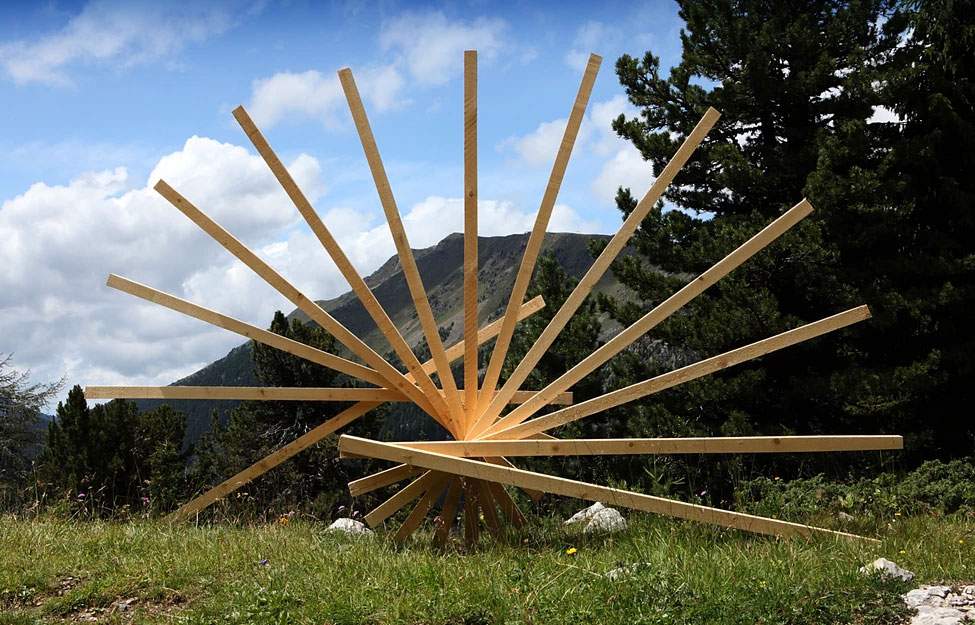
The small church of San Rocco is located in the center of Tesero and is distinguished by its gabled facade frescoed with the particular iconography of the Sunday Christ: the iconography, widespread in Trentino (the 16th-century frescoes of San Rocco in Tesero are probably the most famous), involves the depiction of the suffering Christ in the center with, around him, a whole series of equipment typical of the work of the valleys (e.g., the farmer’s tools, those of the carpenter, but also those for weaving and spinning, i.e., activities typical of women). The intent of this iconography was to urge mountain Christians to lay down the tools of labor on the feast day, Sunday, to be devoted instead to prayer, rest (since God had also rested on Sunday, working on the feast day was considered sacrilegious) and meditation.

It is the historic seat of the Magnifica Comunità di Fiemme, is located in the center of Cavalese, and was built in the 14th century: however, it became the seat of the Community only in 1850 (before that it was in fact the seat of the vicars of the Prince-Bishops of Trento, and before that of the Prince-Bishop himself). The present appearance of the structure dates back to the extensions of the late 15th century. The palace is distinguished by its splendid frescoed facade, and inside it houses a picture gallery with more than a hundred works of ancient art, mostly from flourishing local schools. Among the most distinguished names in the Pinacoteca are those of Giambattista Pittoni, Michelangelo Unterperger, and Paul Troger. Historic rooms and prisons are also visited (in fact, the palace also housed a prison from the late 15th century until the 19th century).

The museum was founded in 2001 to house a contemporary art collection loaned to the City of Cavalese by a local collector. It is housed in the historic Palazzo Rizzoli and also hosts exhibitions and events that, explains the presentation on the official website, “follow a line of research and investigation into the new artistic-perceptual values of a territory, the Alpine one, strongly characterized by the search for a synthesis between the need to maintain its traditions and the necessity to proceed along the path of innovation.” In fact, the collection hosts works by a number of local artists who have been able to carve out a prominent role for themselves in international art in recent years: the masters of wood sculpture, such as Bruno Walpoth, Willy Verginer and others, stand out in particular. Also present are works by such well-known and relevant artists as Hidetoshi Nagasawa, Omar Galliani, and others.

A building of ancient origins (it was consecrated in 1193), it is located in Daiano, a hamlet of the municipality of Ville di Fiemme, and looks like a church where the Gothic style of the main body (which is no longer the original one, however: the church was in fact rebuilt in the 16th century, with a style that, however, recalled the previous one) and the late Baroque style of the bell tower coexist: the onion-shaped bell tower, in particular, is one of the most characteristic in the area. The façade features a fresco (painted between 1590 and 1610) depicting St. Christopher, protected by a canopy as is often the case in mountain churches, while the interior features 15th-century frescoes, a medieval panel depicting the Madonna and Child, and aLast Supper by Antonio Longo, the most important painter in the Fiemme Valley in the 18th century.
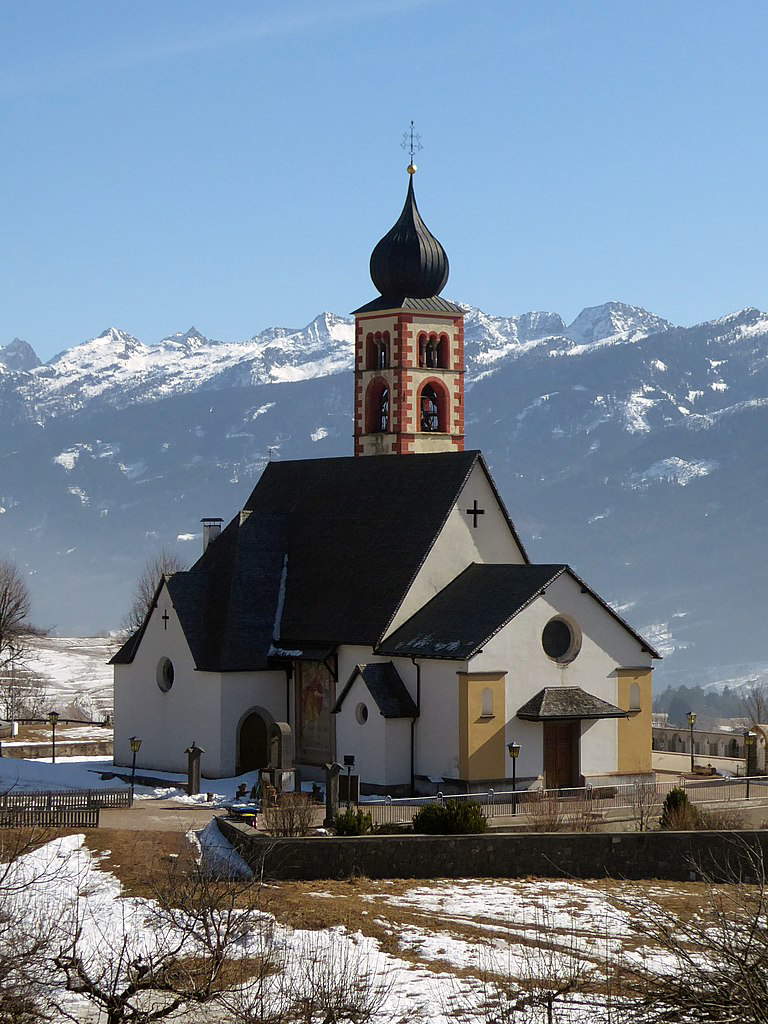
Built between the end of the 13th and the beginning of the 14th century (the solemn consecration is much later, however: in 1474), the church of Saints Leonard and Gotthard in Tesero is an austere building, with a gabled facade, and interiors that retain their original Gothic appearance (with ribbed vaults and polygonal apse) and are richly decorated: there is a large altarpiece depictingOur Lady of Sorrows by Antonio Longo (which, however, was not made for the church: in fact, it was moved there in 1819) and a 1541 fresco depicting theLast Supper, painted by anonymous local painters. The frescoes are distinguished by their very simple, everyday style.
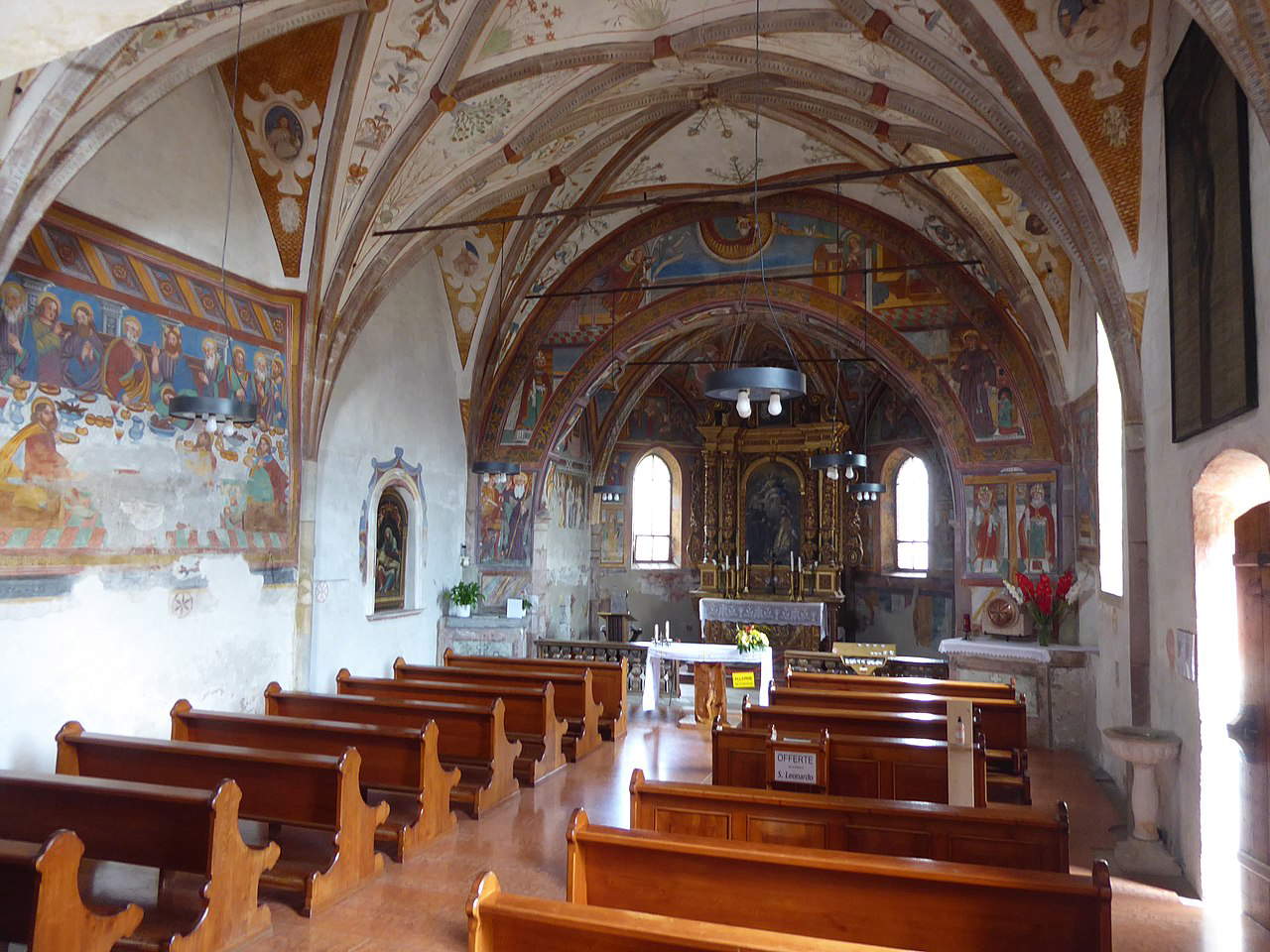
This is an imposing and interesting neo-Gothic-style house of worship, built between 1866 and 1869 on the site of the earlier Gothic-style church built in the early 16th century. Designed by engineer Michele Mayer, the church of Saints Philip and James of Predazzo was built almost entirely from local materials (the ten octagonal columns inside, made from a single block of monzonite that fell from the mountain into the Avisio stream, stand out in particular) and was solemnly consecrated on August 27, 1875. A tall bell tower towers over the facade, and the interior, with its high cross vaults, recalls that of ancient thirteenth-century basilicas. The frescoes decorating the interior were painted by Roman Eugenio Cisterna in the early 20th century.

The 16th-century church of San Nicolò, Predazzo’s cemetery church, is the oldest in the village and one of the oldest in Val di Fiemme. It is a sober building, built in the simple Gothic style of the mountains: it has a cusped façade on which a pointed-arch portal opens, raised on four steps, and on the outside it also has an 18th-century niche with a statue of St. John Nepomuk, the patron saint of floods (the church in fact stands in an area of the town prone to flooding). Inside, the walls of the nave are bare, but the apse is richly decorated with frescoes.
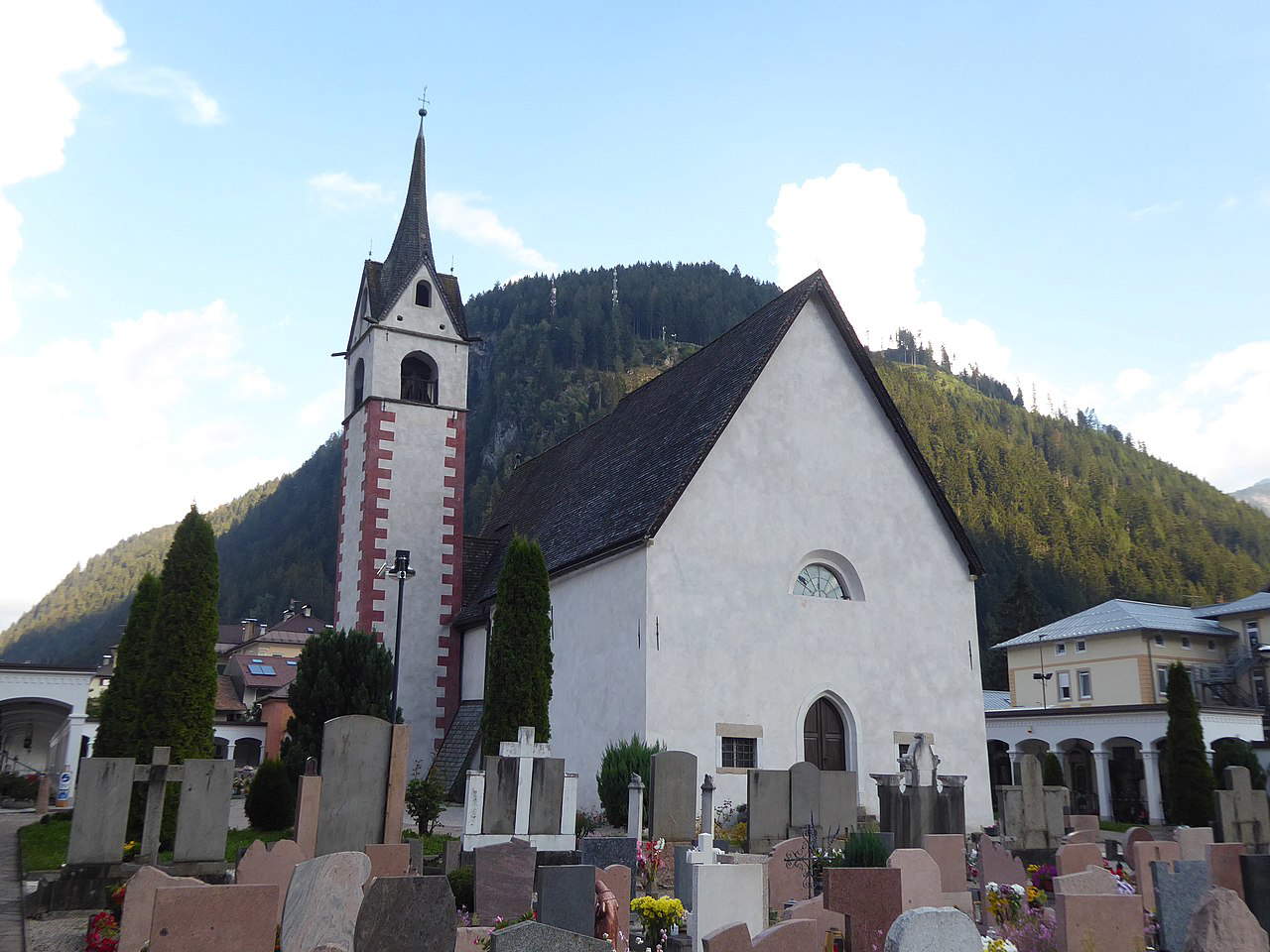
The museum is located in Varena in the birthplace of Antonio Longo (Varena, 1742 - 1820), the most important 18th-century painter in Val di Fiemme: born into a peasant family, he studied in the seminary in Trento, was ordained a priest in 1766 and assigned to the parish of his hometown, but in parallel he also trained as a painter in the workshop of Giuseppe Alberti, later collaborating with Michelangelo and Cristoforo Unterperger. In 1780 he moved to Rome and, thanks to his friendship with Cristoforo Unterperger, who was a member of the Accademia di San Luca, was able to meet Anton Raphael Mengs and Pompeo Batoni. His works also include the frescoes in the Palace of the Magnifica Comunità di Fiemme, and many of his works adorn several churches in Trentino. The Birth House Museum allows visitors to learn more about the life and works of this singular artist.
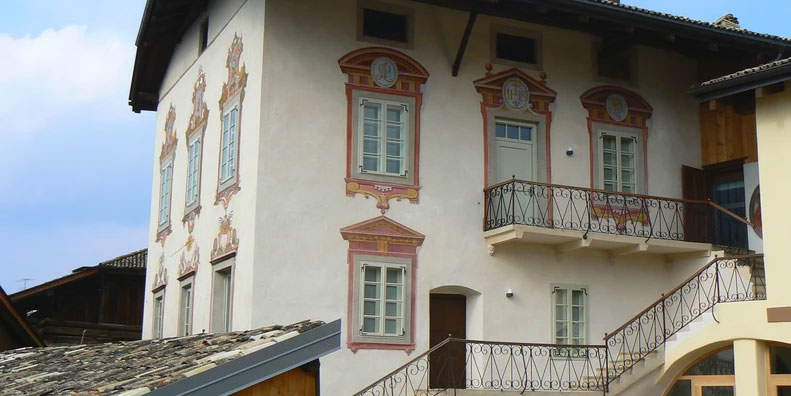
It is not really a destination ... art, but the Paneveggio Forest has a strong connection with art, and in particular with music, because it is the forest of spruce trees from which the fine wood was obtained that, in Cremona, Stradivari used to make his violins. Tradition has it that Antonio Stradivari himself went to the Paneveggio forest in person to search for trees with the best characteristics: the wood of the spruce is particularly suitable for making stringed instruments as it is very light and capable of transmitting sound well. The forest covers an area of more than four thousand hectares, is located at a rather high altitude (at more than 1,400 meters above sea level), and for this reason there are not many tree species that populate it: these are mainly conifers, starting precisely with the spruce, the most present tree.

 |
| Art in Val di Fiemme: 10 places to see |
Warning: the translation into English of the original Italian article was created using automatic tools. We undertake to review all articles, but we do not guarantee the total absence of inaccuracies in the translation due to the program. You can find the original by clicking on the ITA button. If you find any mistake,please contact us.